
Clarke County is a county in the Commonwealth of Virginia. As of the 2010 census, the population was 14,034. Its county seat is Berryville. Clarke County is included in the Washington-Arlington-Alexandria, DC-VA-MD-WV Metropolitan Statistical Area.
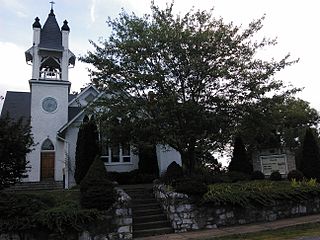
Boyce is a town in Clarke County, Virginia, United States. The population was 589 at the 2010 census, up from 426 at the 2000 census.
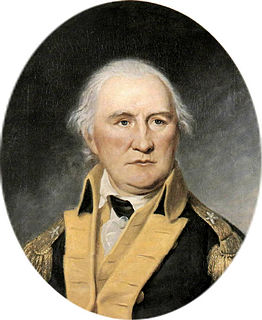
Daniel Morgan was an American pioneer, soldier, and politician from Virginia. One of the most respected battlefield tacticians of the American Revolutionary War of 1775–1783, he later commanded troops during the suppression of the Whiskey Rebellion of 1791–1794.

Andrew Pickens was a militia leader in the American Revolution. A slave-owner, he developed his Hopewell plantation on the east side of the Keowee River across from the Cherokee town of Isunigu (Seneca) in western South Carolina. He was elected as a member of the United States House of Representatives from western South Carolina. Several treaties with the Cherokee were negotiated and signed at his plantation of Hopewell.

William Washington was a cavalry officer of the Continental Army during the American Revolutionary War, who held a final rank of brigadier general in the newly created United States after the war. Primarily known as a commander of light dragoons, he led mounted troops in a number of notable battles in the Carolinas during the campaigns of 1780 and 1781.

The Battle of Cowpens was an engagement during the American Revolutionary War fought on January 17, 1781 near the town of Cowpens, South Carolina, between U.S. forces under Brigadier General Daniel Morgan and British forces under Lieutenant Colonel Banastre Tarleton, as part of the campaign in the Carolinas. The battle was a turning point in the American reconquest of South Carolina from the British.
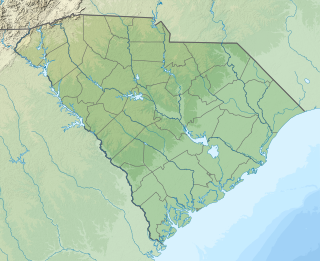
Cowpens National Battlefield is a unit of the National Park Service just east of Chesnee, South Carolina, and near the state line with North Carolina. It preserves a major battlefield of the American Revolutionary War.

Lower Brandon Plantation is located on the south shore of the James River in present-day Prince George County, Virginia.
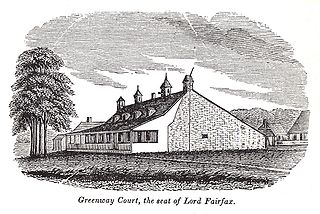
Greenway Court is a historic country estate near White Post in rural Clarke County, Virginia. The property is the site of the seat of the vast 18th-century land empire of Thomas Fairfax, 6th Lord Fairfax of Cameron (1693-1781), the only ennobled British colonial proprietor to live in one of the North American colonies. The surviving remnants of his complex — a later replacement brick house and Fairfax's stone land office — were designated a National Historic Landmark in 1960.

Oatlands Historic House and Gardens is an estate located in Leesburg, Virginia. Oatlands is operated by the National Trust for Historic Preservation and is listed on the National Register of Historic Places as a National Historic Landmark. The Oatlands property is composed of the main mansion and 415 acres of farmland and gardens. The house is judged one of the finest Federal period country estate houses in the nation.

Walnut Grove Plantation, the home of Charles and Mary Moore, was built in 1765 on a land grant given by King George III. The property is located in Roebuck in Spartanburg, South Carolina. Charles Moore was a school teacher and used the 3,000-acre (12 km2) plantation as a farm. The Moores had ten children, and some of their descendants still live within the area.

Carter Hall was the Millwood, Virginia, USA estate of Lt. Col. Nathaniel Burwell (1750–1814). It is located in the upper Shenandoah Valley, off Virginia Route 255 northeast of Millwood. The estate includes a grand plantation house, a great lawn, and terraced gardens, and has panoramic views in all directions. It is listed on the National Register of Historic Places.

The Reynolds Homestead, also known as Rock Spring Plantation, is a slave plantation turned historical site on Homestead Lane in Critz, Virginia. First developed in 1814 by slaveowner Abraham Reynolds, it was the primary home of R. J. Reynolds (1850-1918), slaveowner, founder of the R. J. Reynolds Tobacco Company, and the first major marketer of the cigarette. Upon liberation of the plantation in 1863, 88 people were freed from captivity and enslavement. It was later designated a National Historic Landmark in 1977. The homestead is currently an outreach facility of Virginia Tech, serving as a regional cultural center. The house is open for tours.
Morgan House may refer to:
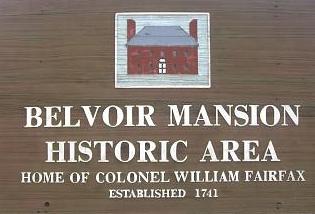
Belvoir was the plantation and estate of colonial Virginia's prominent William Fairfax family. Operated with the forced labor of enslaved people, it sat on the west bank of the Potomac River in Fairfax County, Virginia, at the present site of Fort Belvoir. The main house — called Belvoir Manor or Belvoir Mansion — burned in 1783 and was destroyed during the War of 1812. The site has been listed on the National Register of Historic Places since 1973 as "Belvoir Mansion Ruins and the Fairfax Grave."

Nathaniel Burwell was an American politician and plantation owner. Perhaps the most distinguished of five men of that name to serve in the Virginia General Assembly before the American Civil War, this Nathaniel Burwell won election to the Virginia House of Delegates as well as the Virginia Ratifying Convention, and also served as the county lieutenant for the James City County militia.

Annefield or Annfield is a historic plantation house located near Boyce, Clarke County, Virginia. Matthew Page (1762–1826) built it beginning around 1790, and named it after his new wife, Ann Randolph Meade (1781–1838), daughter of Richard Kidder Meade and sister of William Meade, whom he married in 1799.

Greenway Historic District is a national historic district located near Boyce, Clarke County, Virginia. It encompasses 432 contributing buildings, 23 contributing sites, and 35 contributing structures. The districts includes the agricultural landscape and architectural resources of an area distinctively rural that contains numerous large antebellum estates. The district contributing buildings are primarily farm and estate residences and their associated outbuildings. Other contributing buildings include three schools, five churches, two mills, a gas station, a restaurant, and a railroad station. The contributing structures are mostly corncribs and the contributing sites are mainly cemeteries and ruins of historic buildings. The district contains ten individual properties and two historic districts already listed on the Virginia Landmarks Register and National Register of Historic Places.

Long Marsh Run Rural Historic District is a national historic district located just outside Berryville, in Clarke County, Virginia. It encompasses 315 contributing buildings, 16 contributing sites, and 35 contributing structures. The district includes the agricultural landscape and architectural resources of an area distinctively rural that contains numerous large antebellum and postbellum estates, and several smaller 19th-century farms, churches, schools and African-American communities.

Blandy Experimental Farm Historic District is a national historic district located adjacent to The Tuleyries at Boyce, Clarke County, Virginia. It encompasses 15 contributing buildings, 1 contributing site, and 1 contributing structure. They include a large, two-story, brick slave's quarters built about 1825; a stone and brick stables that was later converted into a dwelling; a turn-of-the-20th-century farmhouse and its associated agricultural and domestic related outbuildings; a late-19th century vernacular hall-parlor-plan house; two historic dwelling sites; as well as orchards and fields of improved pasture.
























